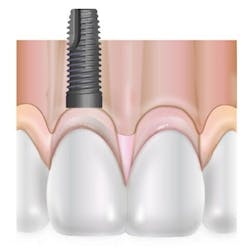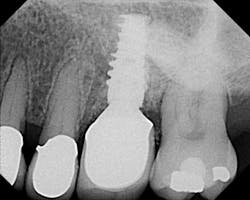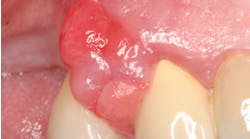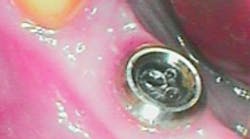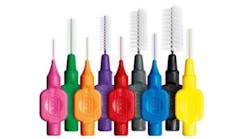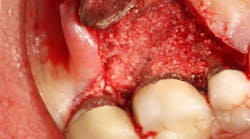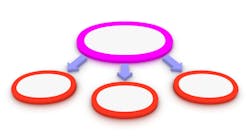The first step in maintenance of the dental implant is to develop an office protocol that includes:
- Probing after placement to establish a baseline pocket depths.
- Taking an X-ray to establish baseline bone level.
Prior to beginning instrumentation:
- Evaluate tone, color, and texture of the tissue surrounding the implant.
- Gently probe, looking for pathology such as swelling, bleeding, or exudate. Note: the patient should be referred back to the specialist for evaluation when inflammation is present.
- Take an annual X-ray; compare bone height from the baseline radiograph.
- Check for mobility.
- Evaluate plaque levels and deposits.
- Review OHI and behavior modification
Ultrasonic instrumentation around implant abutments may be used on a low to moderate amplitude. The water acts as a lavage and gently flushes debris from the implant sulcus. Calculus that forms on the abutment is typically not firmly adhered and can be removed using light pressure. A polishing agent may be used post-instrumentation using a soft rubber cup and low-abrasive dentifrice.
In conclusion, implant maintenance plays a key role in the success of dental implants via assessment and debridement through maintenance appointments scheduled every three months.
Author bios
Robert "Bob" Gottlieb, DDS, received his dental degree from the University of Illinois in 1975 and his specialty certificate in periodontics from the University of Washington in 1977. He has held teaching positions at three universities and has been in private practice for more than 35 years. Dr. Gottlieb has served as president of the Snohomish County Dental Society and the Washington State Society of Periodontists, chairman of the Shoreline Community College Dental Hygiene Advisory Board, and has been a Washington Dental Service trustee. In addition, he has directed and mentored numerous study clubs as well as lectured extensively in California and Washington. He is a board member as well as a founding member of the PreViser Company, an innovative company that designs software for improved dental diagnosis, risk analysis, and treatment. Visit www.previser.com for more information.
Suzanne Newkirk, RDH, graduated from the University of Alaska, Anchorage, in 1981 and has dedicated the last 30 years to excellence in clinical dental hygiene and periodontics. Newkirk is a periodontal therapist, dental hygiene coach, and mentor. She is also a Perioscopy instructor and speaker and a member of the American Dental Hygienists’ Association and Washington State Dental Hygienists’ Association.

